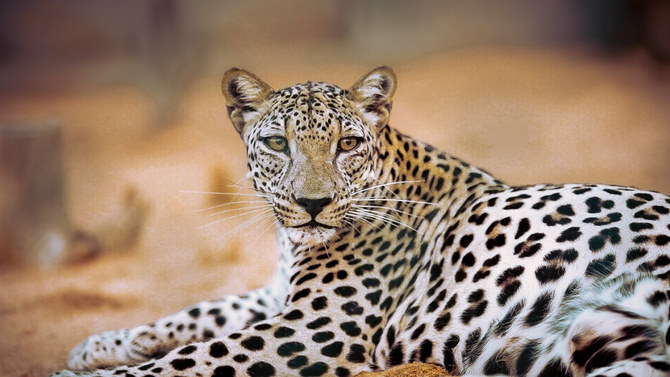
Once roaming freely across the rocky mountains and arid landscapes of the Arabian Peninsula, the Arabian leopard is now one of the most endangered big cats on Earth. With fewer than 120 individuals left in the wild, this elusive predator teeters on the brink of extinction. But despite daunting odds, hope is growing in the sands of Saudi Arabia, where an ambitious effort is underway to bring this rare feline back from the edge.
What Is the Arabian Leopard?
The Arabian leopard (Panthera pardus nimr) is the smallest and most endangered subspecies of leopard. Adapted to life in dry, rugged terrain, it has a pale, spotted coat that helps it blend into rocky outcrops. Males typically weigh under 70 pounds—much smaller than their African cousins—but they’re no less fierce. Solitary, stealthy, and territorial, Arabian leopards are apex predators, hunting gazelles, hyraxes, and other desert wildlife.
A Species in Crisis
The Arabian leopard’s historical range once spanned Saudi Arabia, Oman, Yemen, the UAE, and even parts of Jordan, Israel, and Egypt’s Sinai Peninsula. Today, the species survives in only the most remote corners of Oman and Yemen. It is believed to be extinct in the wild in Saudi Arabia, where the leopard once held iconic status in folklore and desert heritage.
Several factors have driven this decline:
- Habitat loss from urban development, farming, and road-building
- Decline in prey due to overhunting and overgrazing
- Poaching for skins and traditional medicine
- Retaliatory killings when leopards prey on livestock
The International Union for Conservation of Nature (IUCN) classifies the Arabian leopard as Critically Endangered—just one step away from extinction in the wild.
A Desert Rewilding Vision
In a bold conservation move, Saudi Arabia has launched a long-term plan to save the Arabian leopard as part of its Saudi Green Initiative. Through the Royal Commission for AlUla (RCU) and the National Center for Wildlife, the Kingdom is investing in captive breeding, habitat restoration, and rewilding projects.
One of the most promising efforts is the Arabian Leopard Conservation Breeding Centre in Taif, where in December 2024, a rare litter of triplet cubs was born—marking a hopeful milestone for the species. These captive-bred leopards are part of a growing population being prepared for eventual release into protected areas like the Sharaan Nature Reserve.
Restoring the Ecosystem
Saving the Arabian leopard means restoring the web of life that sustains it. That includes:
- Reintroducing prey species such as Arabian gazelles and Nubian ibex
- Planting native trees to combat desertification and provide shelter
- Fencing reserves to protect against livestock and human encroachment
- Training local communities in conflict prevention and ecotourism
International partners like Panthera, the Smithsonian, and the Zoological Society of London are helping Saudi Arabia build scientific capacity and design effective rewilding strategies.
A Fragile Future
Conservation in Saudi Arabia faces major challenges. The country’s harsh desert environment recovers slowly, and human pressures—from mega-projects like NEOM to recreational off-roading—continue to fragment the landscape. Moreover, the leopard’s natural prey remains scarce, and public awareness about the species is still limited.
But the commitment is real. With multi-million dollar investments, growing international cooperation, and signs of breeding success, Saudi Arabia is emerging as an unlikely leader in big cat conservation.
Why It Matters
The Arabian leopard is more than a charismatic predator. It’s a symbol of ecological balance, natural heritage, and cultural identity across the Middle East. Its survival offers hope that even the most fragile species can recover with the right mix of science, policy, and public will.
As Dr. H. Bobby Fokidis of Rollins College said:
“Even in the desert, the flower of hope can grow—if it comes with a wildlife veterinarian, GPS collars, drone surveillance, and a few billion riyals.”
Want to help? Support organizations like Panthera or the Arabian Leopard Fund, spread awareness, and stay informed about wildlife conservation in the Middle East.
More photos below ↓












Disclaimer: This blog post is for edutainment purposes only and may not be entirely accurate.






